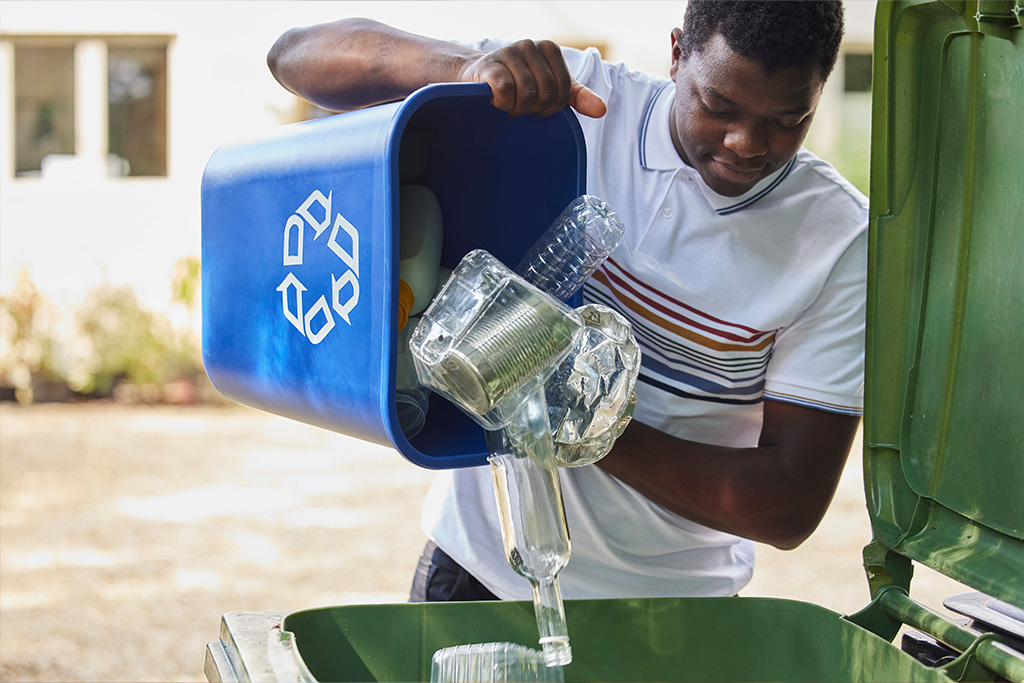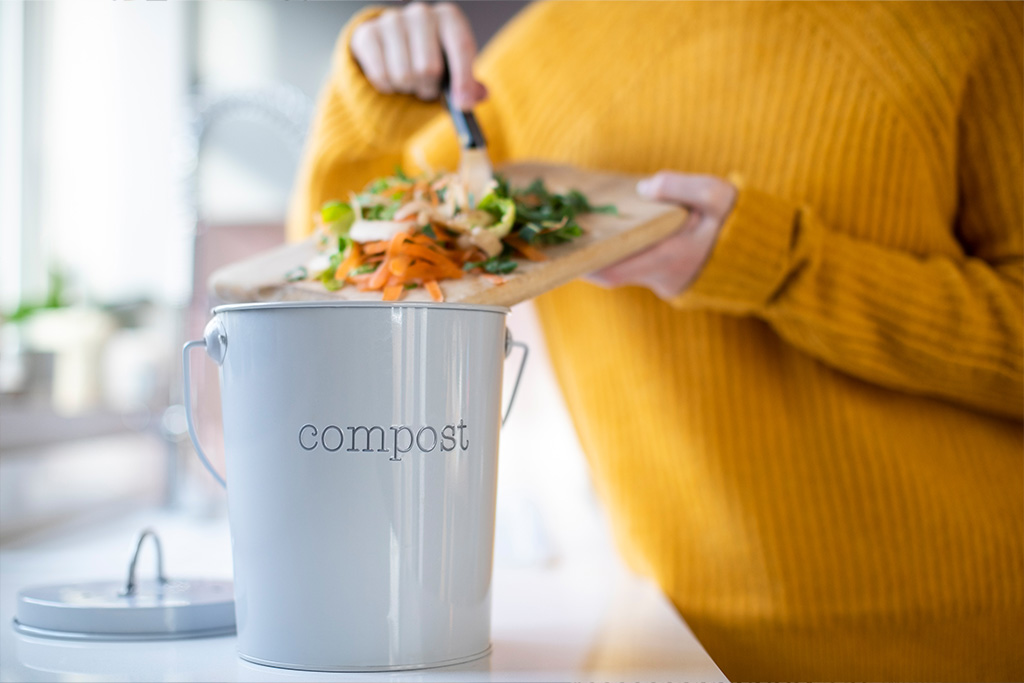Simple Ways to Reduce Waste
T he average American produces almost five pounds of trash daily, which amounts to nearly 1.7 billion pounds of waste every single day. This almost incomprehensible amount of trash may seem too overwhelming to do anything about, especially when you think about the harm it causes: polluted waterways, endangered wildlife, contaminated soil, and higher health risks for people living near landfills.
However, there are multiple small ways to reduce the quantity you throw away and mitigate your waste’s impact on our planet. Rather than a complete overhaul, these steps are convenient, easy to implement, and potentially fun for your family.
Recycle

With our waste accumulating by the day, it’s become even more essential to recycle goods like plastics, cardboard, aluminum, and paper. Though not everything you put into your recycling bin will get reused, the potential impact is still enormous. That’s because recycling doesn’t just keep waste out of landfills and delicate ecosystems like rivers; it also reduces the need to harvest, refine, and transport raw materials. For example, the EPA estimates that recycling ten plastic water bottles can save enough energy to power a laptop computer for over twenty-five hours. Meanwhile, one ton of recycled office paper can save the energy equivalent of a whopping 322 gallons of gasoline!
Keep in mind, however, that not all materials can be recycled in the same way. If you need help recycling at home, refer to the simple guide at the bottom of this page.
Compost

This method of converting food scraps and other organic waste into enriched soil has dozens of environmental benefits, like reducing greenhouse gases emitting from decomposing food scraps and keeping other organic waste out of landfills. The US Composting Council (USCC) has step-by-step instructions on its website to help you get started today.
You can find outdoor composting kits at your local lawn care store, or consider using an indoor kit, an innovative small bin that can compost organic waste right in your kitchen. All you’ll need to do is toss in food scraps, such as coffee grounds, rotting produce, and eggshells, inedible plant parts like banana peels, and even yard waste like leaves and grass clippings. The composting system will convert this matter into fresh soil for your garden in a safe, nonpolluting way.
Change how you shop

One of the simplest ways to minimize waste is to carry reusable bags. Mesh, cloth, and canvas bags are far easier to reuse than paper or plastic ones, and they’re hardier too. Switching to reusable bags alone can help reduce the whopping five trillion single-use plastic bags produced worldwide every year.
Select bags that reflect your personal style or interests, like a favorite film series, and you’ll enjoy using them every time you shop for groceries, clothes, home supplies, and more. For sanitary purposes, select mesh bags for fresh produce, and wash them regularly.
Change where you shop

Your shopping destinations can also have a positive impact on the world. Before you buy just about anything new, consider giving used items a home instead. Shop at consignment and vintage stores to find furniture, decor, clothing, electronic supplies like chargers, and more. You can also sell or donate items to these stores as another way to help keep waste out of landfills.
Social media also puts a wide range of products at your fingertips, such as with “buy nothing” groups that allow users to exchange gently used goods at low prices. Shop smarter, and you’ll decrease the need for environmental resources to generate new products and keep unwanted goods out of landfills—all while saving money and maintaining the joy of shopping. That’s a win for everyone involved.
Change how you eat

This may sound dramatic, but it doesn’t have to be. There are two minor tweaks you can make to your shopping list and cooking tasks that will significantly reduce waste.
First, try to shop locally for food as much as possible. Visit farmers markets and shops like butchers that sell locally harvested goods (and remember to take your reusable bags). Much of the waste associated with the food industry is attributed to long-distance shipping, so buying and eating local foods has a huge impact. These fresh, seasonal foods often taste better too!
Secondly, try to reduce the amount of food you throw away at home. This doesn’t mean you should binge-eat until the fridge is empty; rather, try to plan simple meals that use up as much of your fresh, perishable food as possible. Soups, stir-fried noodle dishes, and casseroles are great “food dump” meals that seamlessly blend a variety of fresh ingredients. If you’re seeking inspiration, visit a food blog to search for recipes that require ingredients you already have on hand.
However, despite your careful planning, you may occasionally find that you still have too much food. If you end up with a surplus—maybe there was a special on locally grown apples, for example—store what you can in the freezer or refrigerator in reusable containers. Also, share bulk meals with loved ones, coworkers, or anyone in need of a fresh meal rather than throwing the extra portions away.
The steps in this guide require very little of you aside from some mindfulness and slight changes to your habits. How comfortable or essential is a plastic bag or a can of imported food to your life, anyway? You don’t lose much when you make these swaps. Instead, you gain the peace of mind that you are making a difference for ecosystems, animal life, and the next generation of young lives that will inherit this planet.
Download the Trash vs. Recycle PDF


